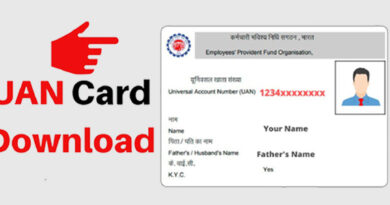What is Partnership Deed? And need of it?
Running a business is difficult. Keeping track of all departments, such as manufacturing, finance, and marketing, is tough and needs steady work. That is one of the main reasons why forming a partnership amongst entrepreneurs is considered the second most effective way to manage a business in any country. So, in this article, we will give you all the details of the partnership deed.

Partnership Deed
A partnership deed is an agreement between a company’s partners that specifies the terms and conditions of their partnership. One of the most common kinds of organizations for beginning a new business is a partnership firm.
A partnership firm’s proper and easy functioning requires a clear knowledge among its partners of the various rules that affect their partnership. This is the reason for the partnership deed is for. It clears all the terms and conditions such as profit/loss sharing, salary, profit/loss sharing, new partner admission interest on capital, draws, new partner admission, and so on for the usefulness of the partners.
Benefits of Partnership Deed
The following are some of the most significant benefits of a Partnership deed:
- It monitors and manages all partners’ rights, responsibilities, and liabilities.
- Prevents a fight between the partners.
- Reduces partner uncertainty about profit and loss distribution ratios.
- The responsibilities of each partner are made clear.
- The remuneration or salary of the partners and working partners is also defined in the partnership document.
- Each partner who has put capital into the company, however, receives interest.
Partnership Deed Contains
All of the terms and legal aspects of the partnership deed are included while creating a partnership deed. This deed also contains fundamental guidelines for future activities and can be used as documentation in the event of a dispute or legal action. The following details should be included in a general partnership deed.
- The firm’s name, as decided by all partners.
- Names and contact information for all of the firm’s partners.
- The start-up date of the company.
- The term of the firm’s activity.
- The amount of money invested by each partner.
- The ratio of profit-sharing between partners.
- Each firm partner’s responsibilities, obligations, and power.
- The salary and, if necessary, commission due to partners.
- The procedure of a partner’s admission or retirement.
- The approach for evaluating goodwill.
- The procedure is to be followed in the situation of a disagreement between partners.
- Procedure to take if one of the partners becomes insolvent.
- An account settlement procedure in the event of a firm’s separation.
Need of Partnership Deed
A proper deed creates legal responsibility amongst the firm’s partners. It defines each partner’s rights, responsibilities, and obligations. As all the terms and conditions of the partners need to be written in detail in the agreement(Partnership Deed), it helps to prevent any misunderstanding and conflicts between the partners.
Type of Partnership Deed
There are 3 types of Partnership Deeds. They are:
- General Partnership Deeds
- Limited Liability Partnership Deeds
- Limited Partnership Deeds
Advantages of Partnership Deeds
Partnerships have many advantages, including:
- Easy to set up
- Affordable
- A group of two or more people
- Flexible rather than stiff
- Financial benefits
- Additional benefits
- Management and risk are not a factor.
- Judgments based on the integration of skills and judgments
- The firm’s dissolution is simple.
Disadvantages of Partnership Deeds
Partnerships have the following disadvantages:
- Unlimited liability
- Limited source of capital
- No freedom – Uncertainty
- Foundation on interests transfer
- Responsibility after retirement
- No independent entity from partners
Documents are needed to register
The following documents are required for the registration of a partnership firm:
- Partner’s documentation (PAN Card and Aadhar or Driving License)
- Certified original copy of Partnership deed
- Proof of the firm’s address (rent agreement and energy bills, gas, landline, or electricity)
- Sales tax registration
- Affidavit copy verifying that all information in the partnership deed and paperwork is correct.
- Application for partnership registration (Form 1)
Absence of Partnership Deed
The following rules apply if no partnership deed is created:
- The partners share equally in the business’s profits and losses.
- The partners do not receive a salary.
- There is no interest in the capital.
- Drawings are not liable to interest charges.
- If all partners agree, interest on loans to the firm will be payable at a rate of 6% per year.
Conclusion
A partnership can have less formation and management costs than a corporation or a trust. A partnership, on the other hand, does not have the same liability precautions as a company or a trust. A partnership does not exist separately from its partners. If liability arises as a result of the partnership, the partners are individually liable. Furthermore, a partner may be held accountable for liabilities made on behalf of the partnership by another partner.
Frequently asked questions (FAQ)
The following are the most crucial aspects of a partnership:
1. Legal relationship
2. There are two or more persons
3. Profit and loss are divided.
No, it isn’t required. However, it is standard procedure to prepare a partnership deed to provide to the bank, the IRS, and clients with whom the partnership firm does deal.
Yes. A person can join up with another individual for a single experience or purpose.

